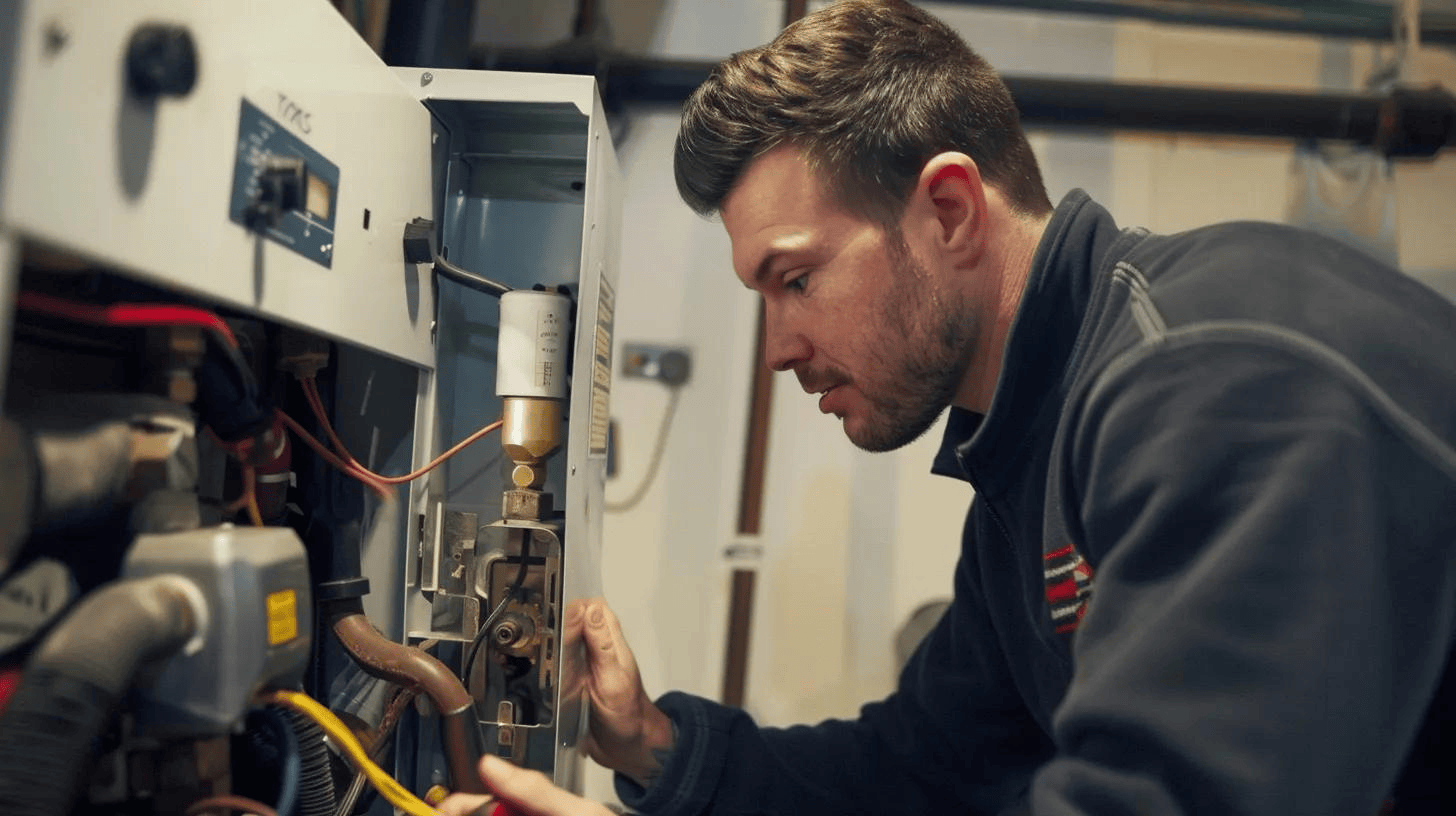Furnace Replacement in Northwest DC, MD
Furnace Replacement in Northwest DC & Maryland
When your furnace fails in Northwest DC or Maryland, professional replacement ensures comfort and safety. This guide covers key signs it's time for an upgrade, such as advanced age, rising bills, or frequent repairs. Discover the benefits of modern, high-efficiency furnaces, including improved energy savings, consistent comfort, and quieter operation. We also explain how to choose the right unit for your home and detail our meticulous installation process, guaranteeing optimal performance and lasting warmth.

Expert Furnace Replacement in Northwest DC & Maryland
When your furnace can no longer provide reliable warmth, it jeopardizes your comfort, safety, and budget. For homeowners in Northwest DC and the surrounding Maryland communities, a failing furnace during a cold winter is more than an inconvenience; it's a significant problem that demands a professional solution. Investing in a new furnace is a critical decision for your home’s long-term comfort and efficiency. Our dedicated furnace replacement services are designed to provide a seamless transition from an old, inefficient unit to a modern, high-performance heating system that you can depend on for years to come.
Is It Time for a New Furnace?
It can be difficult to know whether a simple repair will suffice or if a full replacement is the more prudent investment. Several clear indicators suggest that your furnace is nearing the end of its operational life. Recognizing these signs can help you plan for a replacement before a complete system breakdown occurs.
- Advanced Age: Most furnaces have a lifespan of 15 to 20 years. If your unit is within or has surpassed this age range, it is operating on borrowed time. Its efficiency has likely declined significantly, and the risk of failure increases with each passing year.
- Rising Energy Bills: A furnace loses efficiency as it ages. If you notice a steady, unexplained increase in your heating bills, your furnace is likely working harder and consuming more fuel to produce the same amount of heat it once did.
- Frequent and Costly Repairs: Are you calling for repairs more than once a year? When the cost of a repair approaches 50% of the value of a new system, replacement is almost always the more financially sound choice. Constant breakdowns signal that internal components are wearing out.
- Uneven Heating: If some rooms in your home are comfortably warm while others remain chilly, your furnace may no longer be ableto distribute air effectively. This inability to maintain consistent temperatures is a common sign of an aging or improperly sized system.
- Unusual Noises: Furnaces make some noise, but you should pay attention to new or escalating sounds. Banging, popping, rattling, or squealing noises can indicate serious mechanical problems, such as a cracked heat exchanger or a failing blower motor.
- Visible Signs of Wear: Look for signs of rust, cracks, or corrosion on the furnace itself. A yellow, flickering burner flame (instead of a steady blue one) can indicate incomplete combustion and a potential carbon monoxide leak, which is a serious safety hazard.
The Benefits of Upgrading to a High-Efficiency Furnace
Replacing your old furnace is an opportunity to significantly upgrade your home’s comfort and energy performance. Modern heating systems offer advanced features and efficiencies that were unavailable just a decade ago, providing tangible benefits that you will notice immediately.
- Improved Energy Efficiency: New furnaces are measured by their Annual Fuel Utilization Efficiency (AFUE) rating. This percentage tells you how much of the fuel consumed is converted directly into heat. While an older furnace might have an AFUE of 60-70%, modern high-efficiency units boast ratings of 95% or higher. This means up to 95 cents of every dollar you spend on fuel is used to heat your home, drastically lowering your monthly utility bills.
- Enhanced and Consistent Comfort: Advanced modern furnaces, such as two-stage or modulating models, provide superior temperature control. By running at lower capacities for longer periods, they eliminate the dramatic temperature swings common with older, single-stage units, ensuring consistent and even warmth throughout your home.
- Quieter Operation: New furnaces are engineered for quiet performance. With insulated cabinets and variable-speed motors, they operate at a much lower volume than the loud, disruptive systems of the past, contributing to a more peaceful indoor environment.
- Increased Reliability and Safety: A new furnace provides peace of mind. You can rely on it to perform through the coldest nights without the constant worry of a sudden breakdown. Modern units also feature advanced safety controls, such as electronic ignition and automated shut-offs, to protect your family.
Choosing the Right Furnace for Your DC/MD Home
Selecting the right furnace is about more than just brand names. It involves matching the fuel type, size, and technology to your home's specific needs and the local climate.
- Fuel Type: The most common options in the Northwest DC and Maryland area are natural gas and electricity. Gas furnaces typically offer lower operating costs, while electric furnaces can be a viable option where natural gas is not available. Our experts can help you assess the best fuel source for your property and budget.
- Understanding AFUE: As mentioned, the AFUE rating is critical. We help you understand the long-term savings associated with choosing a higher AFUE furnace. Investing in a unit with a 95% AFUE rating or higher can lead to substantial savings over the system's lifespan and may qualify you for local utility rebates.
- Proper Sizing is Crucial: A common misconception is that a bigger furnace is always better. An oversized unit will cycle on and off too frequently, wasting energy, creating uneven temperatures, and causing premature wear. An undersized unit will struggle to heat your home on the coldest days. We perform a professional load calculation that considers your home's square footage, insulation, window types, and layout to determine the precise size (measured in BTUs) needed for optimal performance and efficiency.
- Furnace Technology:
- Single-Stage: Operates at 100% capacity every time it turns on. This is the most basic and least efficient option.
- Two-Stage: Can operate at a lower capacity (around 60-70%) most of the time, only ramping up to full power on the coldest days. This saves energy and provides more even heating.
- Modulating: The most advanced option, a modulating furnace can adjust its heat output in tiny increments, providing the most precise temperature control and the highest level of efficiency.
Our Professional Furnace Replacement Process
We follow a meticulous, structured process to ensure your new furnace is installed perfectly for optimal safety, performance, and longevity.
- In-Depth Home Assessment: Our process begins with a thorough evaluation of your current system, your home's heating needs, and your ductwork. We perform a detailed load calculation to ensure the new unit is perfectly sized.
- Safe Removal of the Old Unit: Our technicians will safely disconnect, dismantle, and remove your old furnace, adhering to all environmental regulations for proper disposal.
- Ductwork Inspection and Preparation: We inspect your existing ductwork for leaks, blockages, or sizing issues. Before installing the new furnace, we make any necessary modifications to ensure optimal airflow and system efficiency.
- Precision Installation: The new furnace is carefully positioned and expertly connected to the electrical, gas, and ventilation systems. Every connection is triple-checked to ensure it meets or exceeds local building codes and manufacturer specifications.
- System Commissioning and Testing: Once installed, we don’t just turn the system on. We conduct a comprehensive series of tests to calibrate the furnace for peak performance, verify safety controls, and ensure proper airflow and temperature output.
- Final Walkthrough: We conclude the process by walking you through the new system’s operation, explaining how to use the thermostat, and providing information on routine maintenance to keep your furnace running efficiently for years.






.png)
